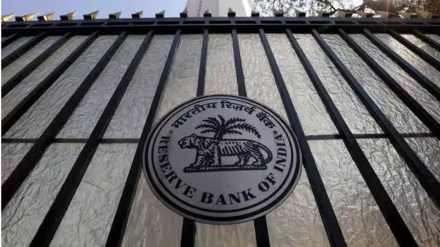Large banks continue to be upbeat on growing their unsecured retail personal loan books at a time when both analysts and the Reserve Bank of India (RBI) have sounded caution about their aggressive growth in the segment. Senior bankers believe that their strong underwriting norms and proactive actions gives them confidence of being able to contain the non-performing assets in this category.
Ashwini Tewari, MD, State Bank of India (SBI) said earlier this month a significant part of the bank’s unsecured retail loan book consists of salary earning individuals, where the delinquency rate and non-repayment risk is much lower. The share of retail personal loan book in overall advances increased to 43% as of June 30 from 42% a year ago. The bank’s personal loan segment gross non-performing asset (GNPA) stood at Rs 8,497 crore as of June end. In percentage terms, its GNPA ratio stood at 0.71% as of June 30, lower than 0.83% a year ago.
“We are fairly safe (in growing unsecured book). Of course, as this grows further, we have to do better job at underwriting, which we are doing,” he said, adding that a key element of growing personal loan book is also building capabilities to collect repayment of small-ticket loans digitally.
SBI is “talking” to two fintechs and has started few pilots in the Northern region to collect loans digitally and monitoring repayments. One of the fintech’s model is conciliation, wherein they talk to customers in their regional languages and explain the repercussions if repayment is missed. Another fintech is studying the propensity of default by a customer, wherein if there are any past non-repayment behavioral trend, the fintech measures it beforehand and alerts the lender to follow up with the concerned customer at an early stage.
“This fintech, when they started onboarding customers, their communication was to send a box of chocolates to customers,” Tewari said, adding that customers who usually avoid postal mail from banks alerting them of non-repayment of their loans, tend to respond to such sort of messaging promptly.
The positive commentary comes at a time when analysts have sounded caution over excess loan growth in one segment. Global rating agency Fitch, in a note on June 1, said a rise in risk appetite among Indian banks highlights the importance of assessing individual banks’ ability to withstand both expected and unexpected balance-sheet stress as part of analysis of their intrinsic creditworthiness.
Indian banks’ loan growth in FY23 reached 15.4%, the highest in over a decade. However, rapid loan growth and higher exposure to certain asset classes is also likely to indicate greater risk appetite and could affect lenders’ intrinsic risk profiles, it said. “Notably, credit card lending and personal loans exposure rose to 10.2% of system loans by FYE23, from 7.5% at FYE18,” Fitch said.
The rating agency views such unsecured categories as “most vulnerable to potential stress”, though exposures among its rated entities remain manageable, and improvements in risk controls and loan-book granularity should help to reduce risks associated with any future asset-quality deterioration relative to previous cycles. Fitch added that it expects a tighter regulatory supervision to slow unsecured lending in the year ahead.
According to an RBI source, the regulator is indeed assessing issuing directions to lenders on hyper growth in retail unsecured personal loan segment.
Harshadkumar T Solanki, general manager and head of mortgages & other retail assets at Bank of Baroda, says a significant portion of lending in personal loans is done mainly to existing customers, where the lender has better visibility on the cash flows and vintage records of customers, thereby limiting the risk.
“Further, our personal loan book is less than 3% of the total domestic loan book of the bank and our market share in personal loans among scheduled commercial banks is also very low,” he said. For underwriting of digital personal loans, the lender uses robust analytical models where the evaluation of prospective borrowers is based on digitally verifiable sources, triangulating the various data points along with credit bureau information. For non-digital personal loans, BoB conducts detailed due diligence and focuses primarily on salaried individuals of large government entities and professionals.
BoB does not foresee stress building in personal loan book, Solanki said. He added that the delinquency level in the personal loan segment is actually lower than secured loans. BoB’s personal loan book stood at Rs 22,042 crore as of June end, up 83% on a yearly basis, while personal loan portfolio’s GNPA ratio stood at 1.13%. The lender did not share the quantum of personal loans in the SMA list in its Q1FY24 investor presentation.
Another senior official at a large-sized bank said the lender is congisant of the adverse commentary of analysts and regulator on the rapid growth in one segment of overall advances. They said that lenders should take note of the comments and accordingly strengthen their risk architecture further, in terms of underwriting, collection and monitoring.
Key points
1- Personal loans largely catered towards salaried class affluent segment
2- SBI partnering with two fintechs for collecting, monitoring small ticket loans
3- Analysts give cautious commentary over excessive growth in personal loan segment
